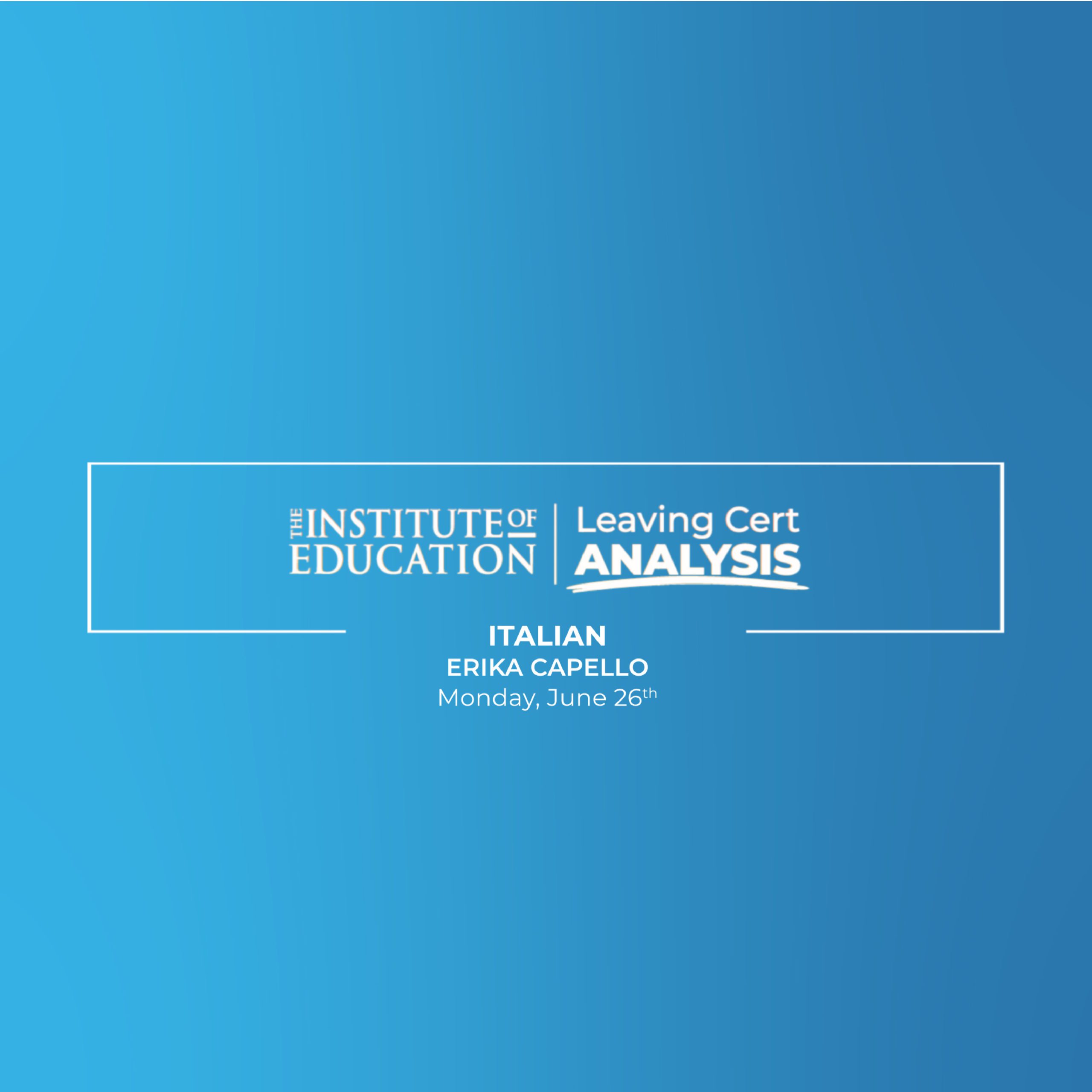Reaction to Leaving Certificate 2023 Italian (Higher Level) by Erika Capello, Italian teacher at The Institute of Education.
- A challenging paper but one that was very manageable for students who remained focused.
- The contemporary topic of Influencers meant that everyone would have something to say.
The exam opened with a journalist comprehension piece on Influencers: A new and charming job. The topic is one with which all the students would be familiar. The vocabulary was accessible and most of the questions required straightforward copy/paste answers with not much manipulation. The grammar question would have caused some students a slight concern as it as on the gerundive, which has never been asked on the paper. This wouldn’t be a game-changer, as the ensemble of questions was nice, but it was a peculiar challenge for the students.
Section B focuses on prescribed texts and students will have been glad to see a pivotal moment from Bianca come il latte, rossa come il sangue (White as milk, red as blood) appear. This would be very familiar and well-prepared, so students would likely feel more confident here. One writing prompt in Section B(3) asks about the significance of the colour choices in the book, something that would have been discussed and analyzed as they explored the text in class.
Section C requires students to write three compositions. The first piece reconnected with the journalistic piece’s theme of influencers. Students had to choose three from a list of five required topics to cover in their piece, but some will have found topics difficult to discuss in their first language, never mind their second under exam circumstances. However, a calm student who reads through all the options will have found enough there to manage the questions effectively. The topic of influencers is so familiar to the modern student that everyone will have something to say about it.
The guided composition was a typical holiday question that students would have seen and practiced countless times, as they worked their way through Senior Cycle. This was no surprise and should not have upset anyone. However, Option A of the Formal Letter section might have caused a moment of pause for some. Typically, students cover four types of Formal Letter: Thank You, Application, Request for Information, and Complaint. This year they were asked to write a “feedback” letter – a style that has not appeared previously. Students would need to combine elements of the Thank You and Complaint styles to answer this piece successfully, which while not inherently difficult, meant that they did not have the comfort of familiar schemes or approaches. Most students will have likely answered Option B, which was much more classic in its demands.
The challenges of the written paper were balanced by a very accessible aural exam. The topics were familiar and the diction well-paced and clear. It was important that students not rush their dialogue answers, as the questions demanded a lot of precise information, so students needed to take their time to ensure it was all covered.
Overall, this written paper was slightly more challenging than the most recent years as it incorporated less familiar elements of language and style into the exam. However, there was enough choice and accessible, traditional material that students would have been able to answer effectively.

